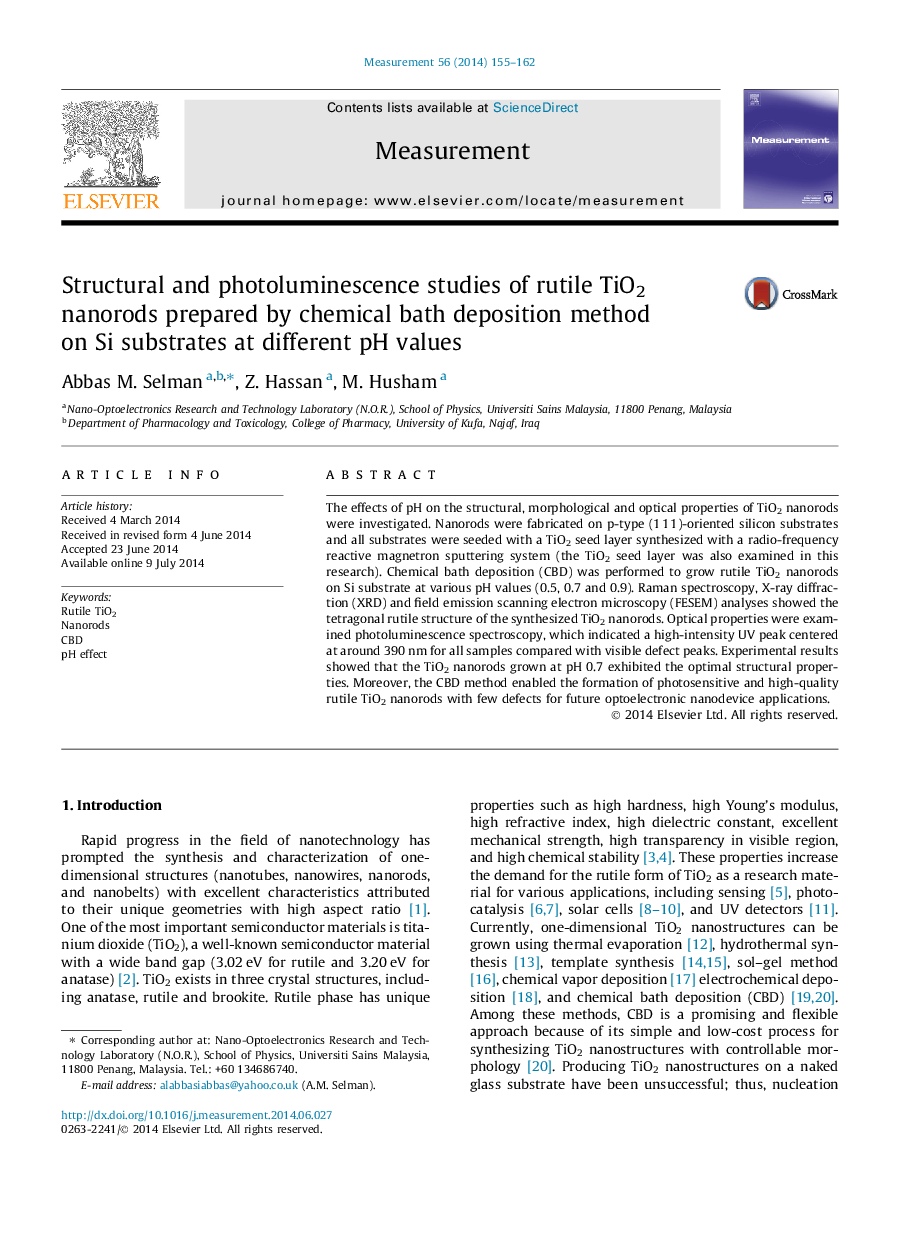| Article ID | Journal | Published Year | Pages | File Type |
|---|---|---|---|---|
| 730192 | Measurement | 2014 | 8 Pages |
•The TiO2 seed layers were deposited on silicon substrates by using an RF sputtering.•The CBD method was used to synthesize rutile TiO2 nanorods onto seed layer.•The effects of pH on structural, morphological and optical properties of TiO2 nanorods were studied.•Optimal structural and optical properties were at pH 0.7.
The effects of pH on the structural, morphological and optical properties of TiO2 nanorods were investigated. Nanorods were fabricated on p-type (1 1 1)-oriented silicon substrates and all substrates were seeded with a TiO2 seed layer synthesized with a radio-frequency reactive magnetron sputtering system (the TiO2 seed layer was also examined in this research). Chemical bath deposition (CBD) was performed to grow rutile TiO2 nanorods on Si substrate at various pH values (0.5, 0.7 and 0.9). Raman spectroscopy, X-ray diffraction (XRD) and field emission scanning electron microscopy (FESEM) analyses showed the tetragonal rutile structure of the synthesized TiO2 nanorods. Optical properties were examined photoluminescence spectroscopy, which indicated a high-intensity UV peak centered at around 390 nm for all samples compared with visible defect peaks. Experimental results showed that the TiO2 nanorods grown at pH 0.7 exhibited the optimal structural properties. Moreover, the CBD method enabled the formation of photosensitive and high-quality rutile TiO2 nanorods with few defects for future optoelectronic nanodevice applications.
Graphical abstractFigure optionsDownload full-size imageDownload as PowerPoint slide
